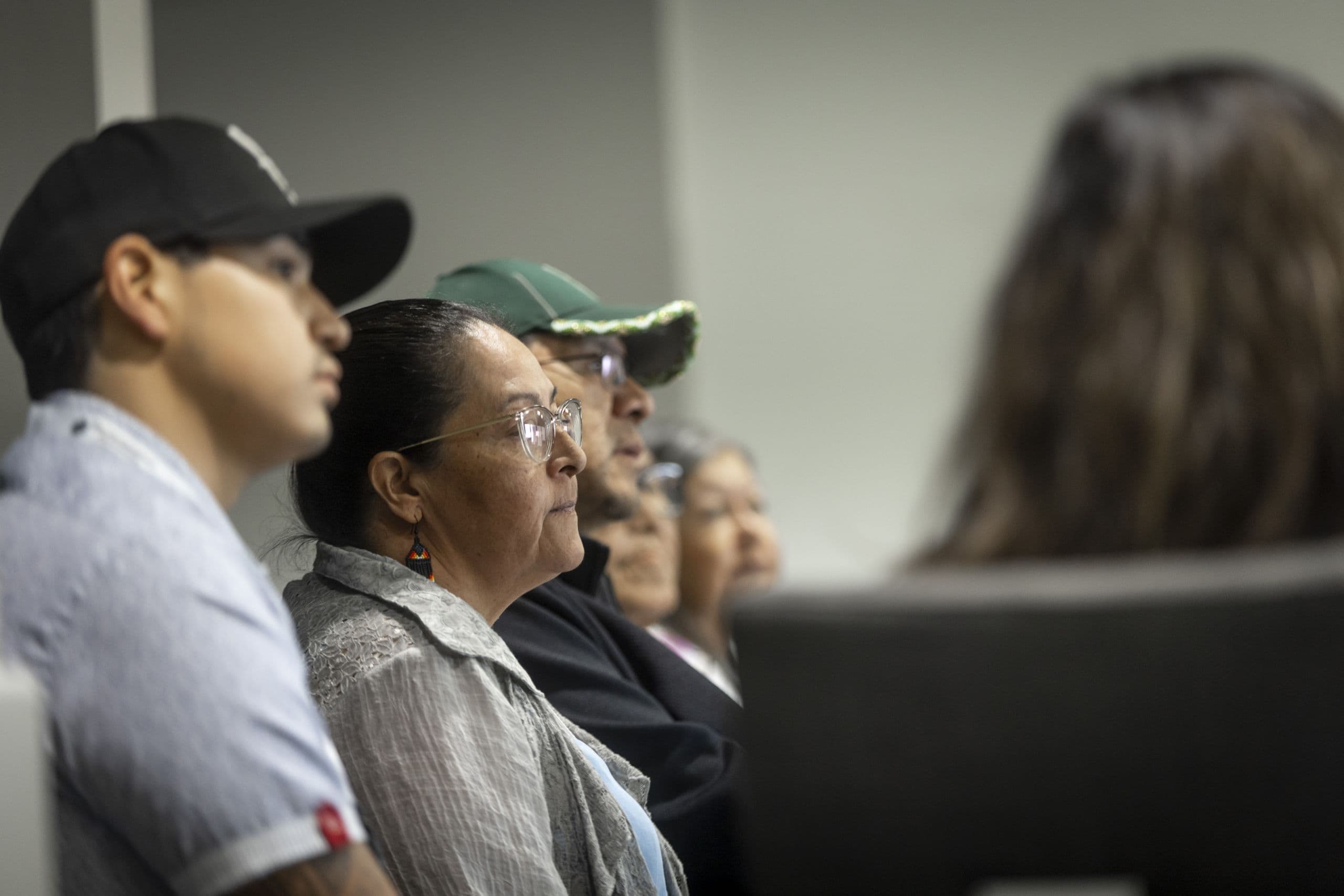
The Office of Commissioner of Indigenous Languages (the Commission) hosted a gathering with a focus on First Nations and Métis language revitalization as a continuation of the previous March gatherings. The goal of the event was to collaborate and engage with Elders, youth, language keepers, experts and speakers to support their unique vision on reclaiming, revitalizing, maintaining and strengthening their languages.
Held on Treaty Six Territory and within the Métis homelands, the event brought together 100 participants who collectively discussed First Nations and Métis language immersion, programming, funding, identity, using Artificial Intelligence (AI), and youth perspectives on language revitalization. The aim was to create an environment where participants could openly share their challenges, barriers, and the most promising practices in their respective areas.
At Delta Hotels Edmonton South Conference Centre, we were fortunate enough to have Elder Rick Lighting, a lifelong advocate for Indigenous languages, give an opening prayer. Elder Lightning shared his prayers and vision for a future where Indigenous languages are vibrant and thriving. Commissioner Ignace then delivered a keynote address, sharing his personal journey of fighting for Indigenous languages and becoming the first Commissioner of Indigenous languages in Canada. He also spoke about the mandate and key activities of the Commission.
The evening featured powerful performances by the Eagle Nation Drum Group accompanied by the Maskwacis singers and the dancers, and Alex Kusturok, Donny Lhirondelle, and Robert Genaille, who delivered a vibrant performance of Métis fiddling. The performances showed the inherent connection dancing, drumming, and music to language and knowledge transmission. The evening set a welcoming and energetic tone for the rest of the language gathering.
The following morning, participants were welcomed by Métis Knowledge Keeper, Daniel Cardinal, who offered an opening prayer. Later, Dr. Daniel Brant provided an insightful overview of the current state of Indigenous languages in Canada, emphasizing promising practices and the challenges related to funding for language programs and initiatives. The deeply inadequate and inequitable funding levels for Indigenous languages also emerged as a critical area of focus.
In a vibrant discussion, a panel of inspirational youth shared their journeys in language revitalization. They revealed how they are preserving and speaking their languages across various settings from community gatherings to urban settings. These passionate next generation of speakers are making waves through personal learning, online forums, land-based immersion programs, and cultural ceremonies.
Their stories underscore the vital role of youth in the future of language preservation. With a blend of hope and urgency, they stress the need for immediate action to keep their languages alive and thriving, “We really need emergency measures to keep these languages while our mother tongue language speakers are still with us. We need to have hope, but at the same time, if we’re not careful and don’t act quickly it can and will be lost.” said one youth.
Data scientist and founder of Fireside Analytics Inc., Shingai Manjengwa, delivered a presentation about the potential role of AI in revitalizing Indigenous languages. They spoke about the necessity of First Nations and Métis participation in its evolution, gave examples on the potential for AI to increase productivity, and emphasized the importance of Indigenous perspectives in building, testing and evaluating models. Manjengwa shared that while AI can be a supportive tool, “it’s Indigenous Peoples that must retain the spirit of the work.”
This gathering was another step towards understanding and addressing the needs, challenges, and opportunities regarding language initiatives led by First Nations and Métis peoples. It was a celebration of the resilience and dedication of those working to preserve and revitalize Indigenous languages, fostering an environment of trust, reciprocity, and interconnectedness.